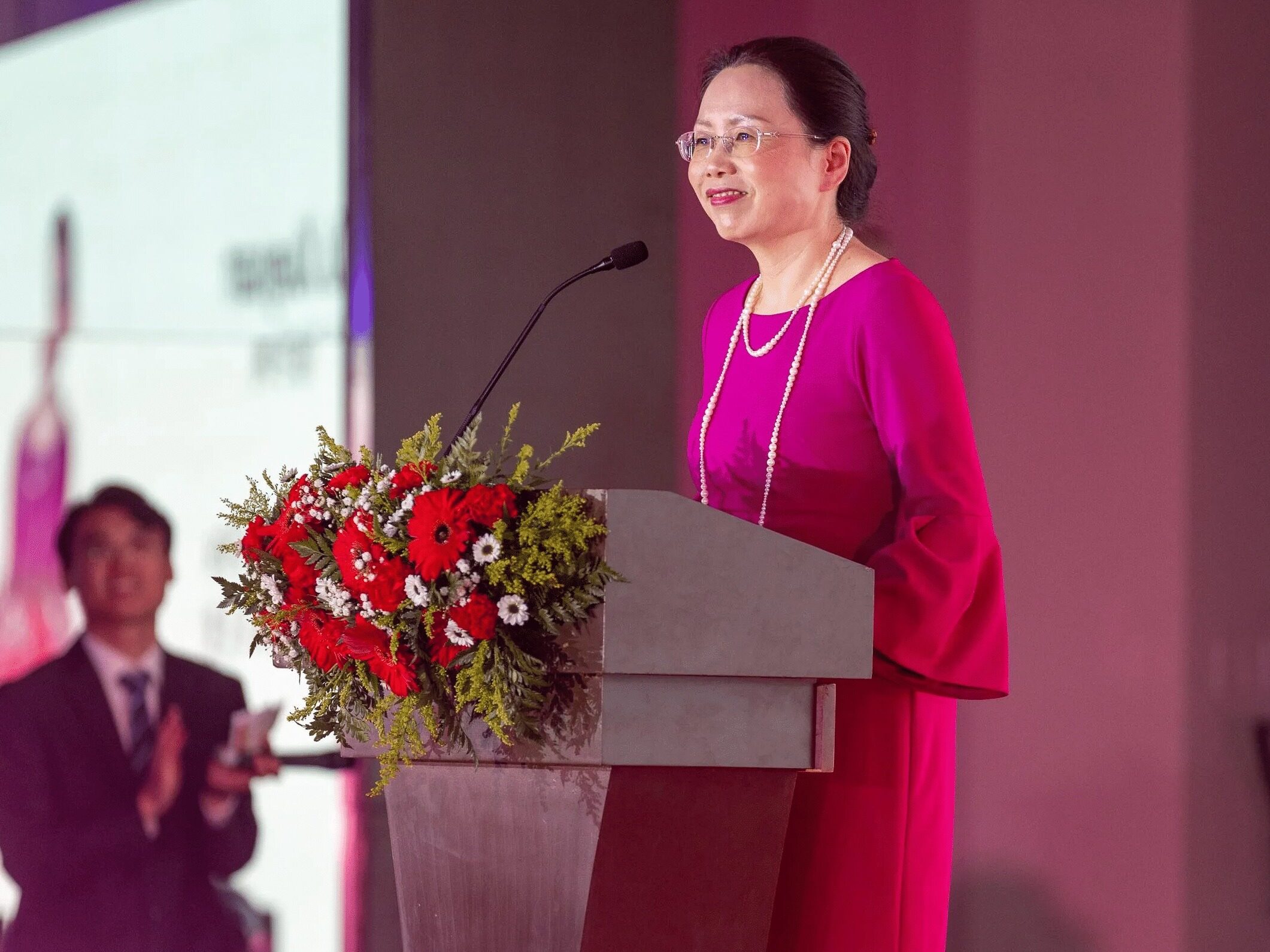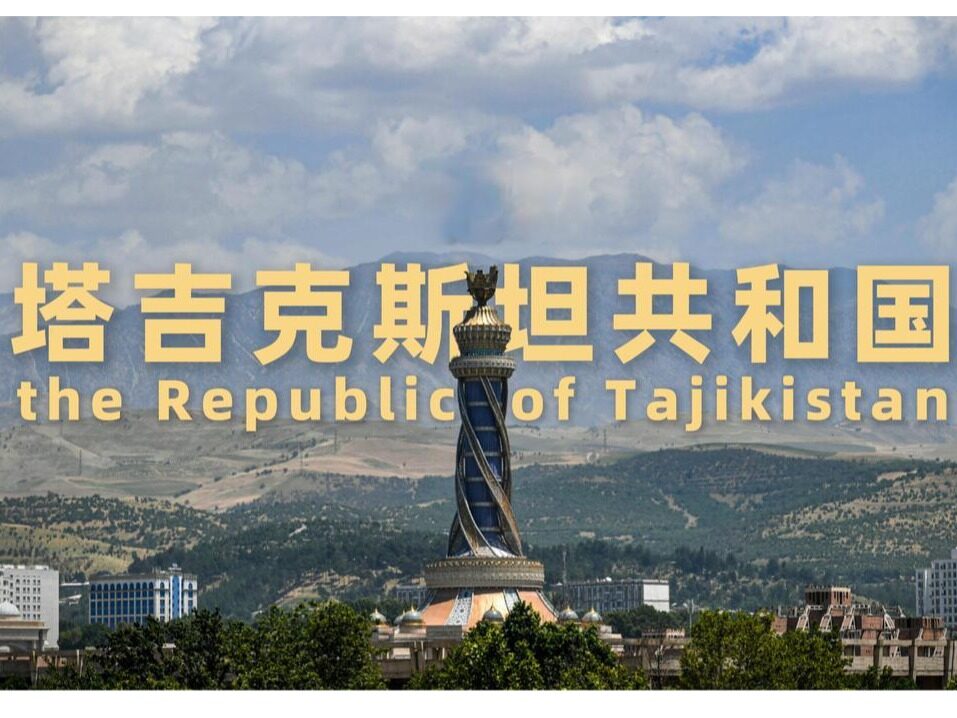
- "Niannujiao Kunlun" looks to the future, expressing the grand ideal of transforming the old world and realizing communism
This "Niannujiao Kunlun" was written in 1935. First published in the January 1957 issue of The Poetry. At that time, the Central Red Army had completed the last leg of the Long March and was about to reach northern Shaanxi. Mao Zedong climbed to the top of the Laoshan Mountain and looked at the vast Kunlun Mountains in Qinghai.
【original】
Nunjiao Kunlun
Born in the sky, Mang Kunlun,
Read all the spring in the world.
Flying three million jade dragons stirred Zhou Tianhan completely.
Summer dissolves, rivers overflow, people or fish.
Qianqiong crime, who has commented?
Today I call Kunlun, don't be high, don't be snowy.
Ande relied on heaven to draw a sword and cut Ru into three sections?
A part of Europe,
A gift of beauty,
Part of the return to the East.
Taiping World, Global is also hot and cold.

[He Xin translation]
Out of the sky, your wild Kunlun Mountain!
You see the change of spring and autumn all over the world
Your body is like three million jade dragons flying—
The whole universe is cold and boned because of your existence!
But when summer comes, your snow and ice are melting
Into the Yangtze River and the Yellow River flooding
How many people are flooded into the king of fish and shrimp because of your flood? !!
Your success and failure in the millennium,
Can anyone comment before?
Let me comment on you today, Kunlun!
I don't want you to be so high,
I don't want you to have so much snow!
I want to draw a sword against my back,
Chopped you into three sections
A gift to Europe,
A gift to the Americas,
Leave only one paragraph for the eastern nations
By then become the world of Datong,
The whole earth is synchronized with your cold and hot!
[Note 1]
Mao Zedong made a note of this word twice before and after.
One of them said: "Songs chanting snow poems: 'Fighting three million dragons, and losing scales and flying armors.' Residual armor. Partial ablation in summer, endangers China, looks good and tastes, try it. "
According to Mao Zedong's comment, Yulong means both the snow-capped mountains that Mao Zedong saw when he wrote the words, and the one million Kuomintang chased by the Red Army.
[Note 2]
For the word Taiping, see "Lü's Spring and Autumn · Daluo": "Taiping in the world, everything is peaceful." And "Historical Records of the First Emperor of Qin Shihuang": "Guizhou is the first to be clean, people are the same, Jiabao Taiping." Taiping is equality and unity Transference.
The word world comes from the Buddhist scriptures (Len Yan Jing, Volume 4). "World" is the meaning of migration, belonging to the category of time. Buddhism believes that the form of existence of time is the third life: the past life, the present life, and the future life. The “boundary” is a place, a definition of orientation, and belongs to the category of space.
The song Zhang Zai has a famous sentence, "Set the heart for the heavens and the earth, set the life for the living people, set up a sacred school for the sanctification, and open the peace for all the world." The last sentence has the meaning of the peace world. However, the term "Taiping World" was created purely by Mao Zedong's term, that is, the Datong World.
[Note 3]
The ending "Return to the East" was originally published as "Stay in China". The 1963 edition of "President Mao's Poems" was changed to "Return to the East". Mao Zedong said that missing Japan (and North Korea and other countries) is not good.

[New interpretation of He]
The word "Niannujiao Kunlun" was written in October 1935. At that time, Mao Zedong led the Central Red Army on the last leg of the Long March, and sent troops to Laoshan, Gansu, Longyou, and was about to reach northern Shaanxi.
In recent years, some people claim that the Long March of the Red Army was a great retreat. This is not true. After the defeat of the Xiangjiang River, the Red Army almost collapsed. This is indeed the case. However, after crossing the Chishui River, Mao Zedong commanded the Red Army to take the initiative, repeatedly winning in defeat, and gradually resurrected.
In September 1935, after the Red Army broke through the Laoshan Tianxian Lazikou and entered Gansu, the peak circuit turned and it was about to make a difference.
Therefore, when reading Mao Zedong's "Nian Nu Jiao", how imposing and imaginative is it? But is there an image of failure? Never!
Regarding the word "Niannujiao Kunlun", Mao Zedong explained that the theme of Kunlun's words is "against imperialism, not anything else." The so-called anti-imperialism is the term that proposes a globalism or cosmopolitanism. Proposition-to establish a new world order as envisaged by Mao Zedong.
In this verse, Mao Zedong overlooked the world and planned the future, and expressed a romantic new world vision-Kunlun Mountain was cut off by Yitian into three: "a part of Europe, a part of the gift, and a part of the East." ;-"Taiping world, the whole world is cool and hot".
At this time, Mao Zedong, who was only leading a remnant army who was defeated by less than 10,000 soldiers, had just emerged from the hardship and survival of the snow-capped mountains and grasslands, and overlooked the world on the Laoshan Mountain in the northwest, so he suddenly thought about it. So, with such romantic feelings, and revealing the ambitions and ambitions of future globalism-it is commendable.
The term "Niannujiao Kunlun" by Mao Zedong is magnificent in spirit and magnificent in imagery. In China's ancient ci poems, arrogance for eternity, never before, never seen before!
[Background, time, place of writing]
The title of "Niannujiao Kunlun" was written in September 1935. According to the history of the Red Army's Long March, in the early morning of September 17, 1935, the 4th Regiment of the 2nd Division and the 1st Army of the First Army of the Chinese Workers 'and Peasants' Army captured the Tianxian Lazikou of Laoshan, and then overlaid the main peak up to 3946 meters in Laoshan Mountains Pull the beam.
Dalaliang is the name of a mountain. It is located at the junction of the three counties of Chuangan, Zhixian, Dangchang and Diebu. It is also the junction of the Laoshan Mountains and Qinling Mountains. Since ancient times, local people have customarily called Dalaliang Sheshan. In the west of Shexian County, there is the mountain named Sheshan, which is the branch of Liupan Mountain, so Liupan Mountain is also called Sheshan in history. Erya: "Bei Daidou is extremely stingy." Laoshan is the legendary place of Huangdi's Taoism, and it is a sacred mountain of Taoism.
On September 18, Mao Zedong crossed the Dalaliang with the Red Army. He stayed in Xuanwo Village, Mazichuan Township, Yi County for two nights.
(Note: According to geography, Shexian was an ancient state, belonging to the domain of Yugong in Yongzhou. Before Qin, it was inhabited by Xiqiao. There is Sheshan in the south and Sheshan in the west.
According to "The History of the Local Party in Gansu" (edited by Qin Sheng and Wang Jinlin, January 1987): "On September 19, 1935, the Red Army continued northward and crossed the Dalaliang. Mao Zedong wrote the famous poems" Seven Laws · Long March "and" Read Nujiao Kunlun. "
(Note: According to the relevant memoirs of the Red Army, on September 18, 1935, Mao Zedong led the column of the Military Commission to Xuanwo Village, Shexian County. That night, Mao Zedong lived in a thatched cottage at the home of the villager Han Qiming. Xuanwo Village was located 20 kilometers south of Shexian County, Gansu Province. It belongs to Mazichuan Township, Yixian County. After leaving Xuanwo Village, Mao Zedong arrived in Hadapu on the 20th and set off for the whole army. He marched day and night after the 23rd, forced to cross Weishui, arrived in Bangluo Town to hold a meeting, and stationed in Tonglu on the 29th. Weicheng.
"Party History Data Collection Newsletter" No. 10, 1986, Liu Ying's "Long March Trivia" notes: "On September 28, 1935, the Politburo Standing Committee meeting was held in Bangluo Town, Tongwei. The next day came to Tongwei The county seat, the cadres meeting, Chairman Mao's poems flourished, and he recited the later famous "Seven Laws · Long March" poems. ")
According to the above information, the two poems "Niannujiao Kunlun" and "Seven-Law · Long March" were written in the Sheshan area of Yixian County, Gansu Province. The writing time should be around September 17-18, 1935.
After the victory in the Lazikou battle, Mao Zedong climbed Dalaliang to the top of Laoshan Mountain, ascended to the distance and touched the scene. "It is even more fascinating to see the mountains and thousands of miles of snow"-Mao Zedong is looking at the snow scene of Laoshan here, and associates it with Kunlun Mountain in the distance.
Therefore, Mao Zedong's word order said: "The predecessors called the" three million war strikes Yulong, defeated scales and armors flying all over the sky ", and it is snow. It is borrowed here, and it is snowy mountains. In the summer, Dengshan looks far away, the mountains Flying, everything is white. The common people said that when Sunwalkers passed this time, they were all flame mountains, because he borrowed a banana fan to extinguish the fire, so it turned white. "
Northern Song Zhang Yuan's "Yongxue": "Seven stars fight the sword to stir Tianchi, roll down the galaxy and drop the emperor's puppet. Three million jade dragons are retired, and broken scales and armor are flying all over the sky." snow. And Mao Zedong changed his mind and used it. The description of the three million jade dragons is not a snowy snow, but a snowy mountain at the foot. The imagination is magnificent!
Laoshan is a large mountain range in western China that spans thousands of miles from northern Sichuan to southern Gansu, with a total length of about 500 kilometers. Xuebaoding, the highest peak of Laoshan, is located in Songpan, Sichuan, at an elevation of 5588 meters. In September 1935, Mao Zedong led the Red Army.

[About the relationship between Kunlun Mountain and Sheshan Mountain]
The long march passed by Mao Zedong was Sheshan, but this "Niannujiao" was signed by Kunlun Mountain, not Sheshan.
Kunlun Mountain is located between Tibet, Xinjiang, and Qinghai, thousands of miles away from Laoshan, Gansu, where Mao Zedong wrote the word. Kunlun is connected to the Pamirs of Central Asia in the west and into Qinghai in the east. The potential is extremely high and above 6000 meters above sea level, with the highest peak reaching 7700 meters. Kunlun Mountain is a famous mountain of ancient mythology. Legend has it that it passes through the Arctic and is where Tianzhu lies. According to ancient myths, there are wonderland such as Yaochi, Yuyuan, Gaocheng, Hanging Garden (hanging garden) on Kunlun Mountain.

And the snow mountain that Mao Zedong came to when writing Nian Nu Jiao Kunlun was not Kunlun Mountain, but Lao Mountain.
Laoshan starts from the south of Shexian in the southeast of Gansu to the north of Mount Emei in the west of Sichuan. In summer, the peak snow does not melt, so there is a saying that "Laoshan has thousands of miles of snow since ancient times".

Since ancient times, Laoshan has been regarded as the source of the Yangtze River. "Shangshu Yugong": "Sheshan leads the river." "Xunzi": "The river comes from Sheshan, and its source can flow." Sheshan is also a watershed between the Yangtze River and the Heishui River in the Yellow River system. . Therefore, Mao Zedong said: "In summer, the rivers are overflowing, and people may be fish." Rivers refer to the Yangtze River and the Yellow River.
Mao Zedong regarded Kunlun Mountain and Laoshan as one body, which is ancient. For example, the Jin people Wang Jizhi thought: "Dangshan has frost and snow in summer, and Kunzhong's Bozhong also."
But in my understanding, Mao Zedong wrote neither Kunlun nor Laoshan in this "Niannujiao Kunlun". He just used Laoshan-Kunlun Mountain as an abstract symbol of love.
There is a central mountain in the thousands of worlds of Buddhist beliefs. Established its cosmology according to Sumiyama. That is to say, the center of Xumi Mountain is surrounded by four mountains, nine seas and eight seas, four continents (four heavens and the world), and the sun and the moon. They are combined into a unit, which is called "One World". Together thousands of "one world" is a small thousand world; combined thousands of small thousand worlds is a medium thousand world; combined thousands of medium thousand worlds is a thousand world. A big world consists of three small, medium, and large 'thousands of worlds', that is, the cube of 1000 is a billion worlds. The Daqian World is also called the Three Thousand Daqian World (Three Thousand Worlds), but the three thousand is not one thousand times three but three cubes. So the universe is made up of a billion worlds.
In fact, in terms of geographical structure, Buddhist Sumeru is the Qinghai-Tibet Plateau with the Himalayas and Kunlun Mountains as the center. So what exactly is the so-called "Kunlun" in Mao Zedong's word? ——That is the Qinghai-Tibet Plateau in China. The last sentence (poem eye) of "Niannujiao" said: "The Taiping world, the world is the same as this". This statement actually expresses the author's idea of a new world order in the future.
The word "this" in the same sentence as "cold and hot" requires special attention. — Where does this so-called "this" mean? That means "China." The so-called "cold and hot", which is the global heat and cold, should be based on China, and should be the same as China!
At this time, Mao Zedong's thinking about the Chinese revolution and the fate of the nation has a global positioning. He overlooked the world, and based on Greater China's subjective consciousness, he esteemed Europe, America, and Japan. This style not only inherited the ancient civilization traditions that unified the world in China, but also linked the communist ideals.
On the snow-capped Laoshan, Mao Zedong felt the profound historical connotation of Kunlun civilization through the desolation of the region. He realized the loneliness and freedom of Kunlun's life consciousness, overlooked the earth with an extremely broad perspective, and thought about the Chinese nation and all humanity. Past, present and future ...

Despising the famine, dominating the universe, and taking China as the central standard against global imperialism-this is the grand narrative and profound meaning of Mao Zedong's "Niannujiao". Author / He Xin Editor / Zhao Yongjing
Comment
 Praise
Praise
 Collect
Collect
 Comment
Comment
 Search
Search














Write something~